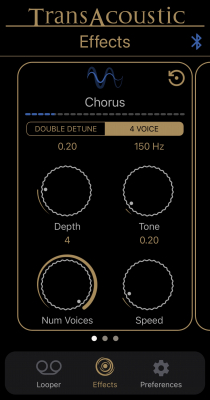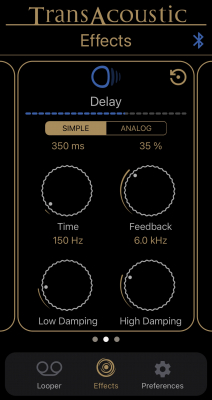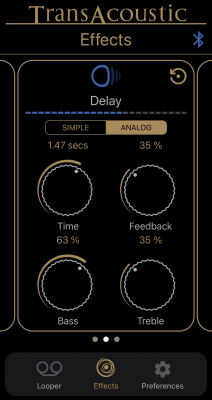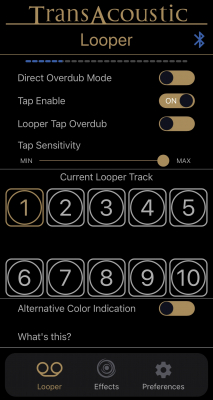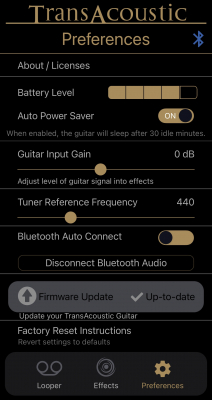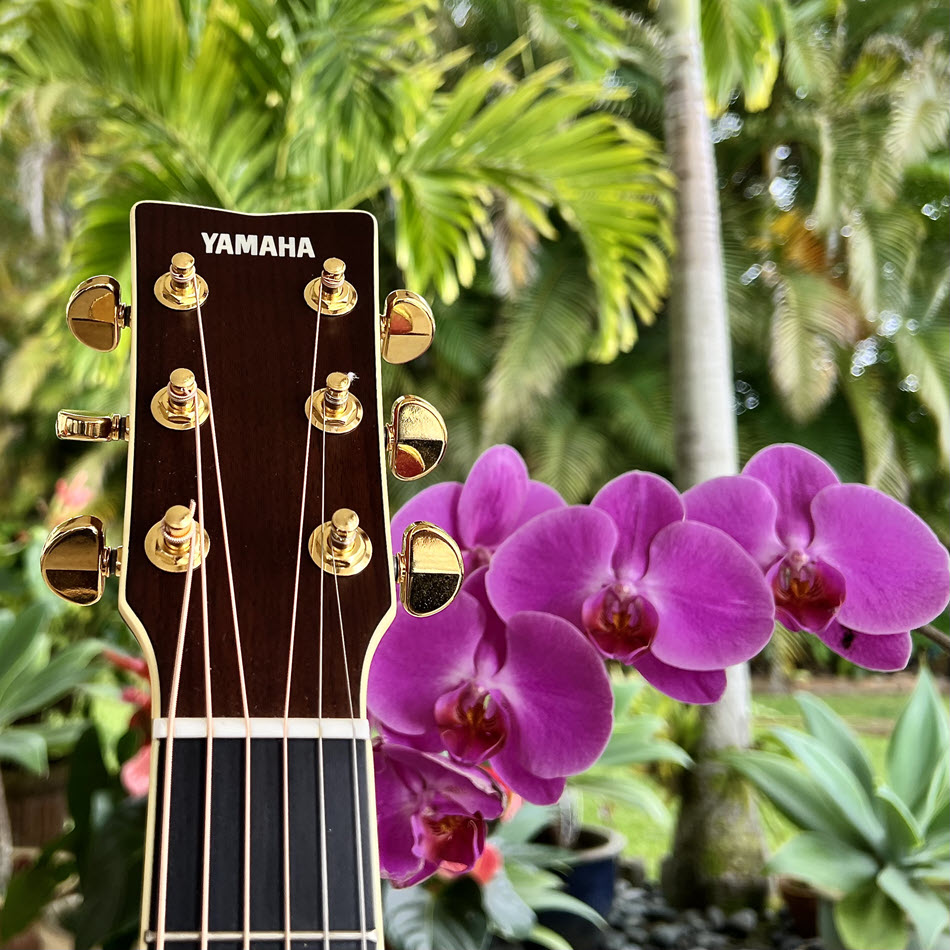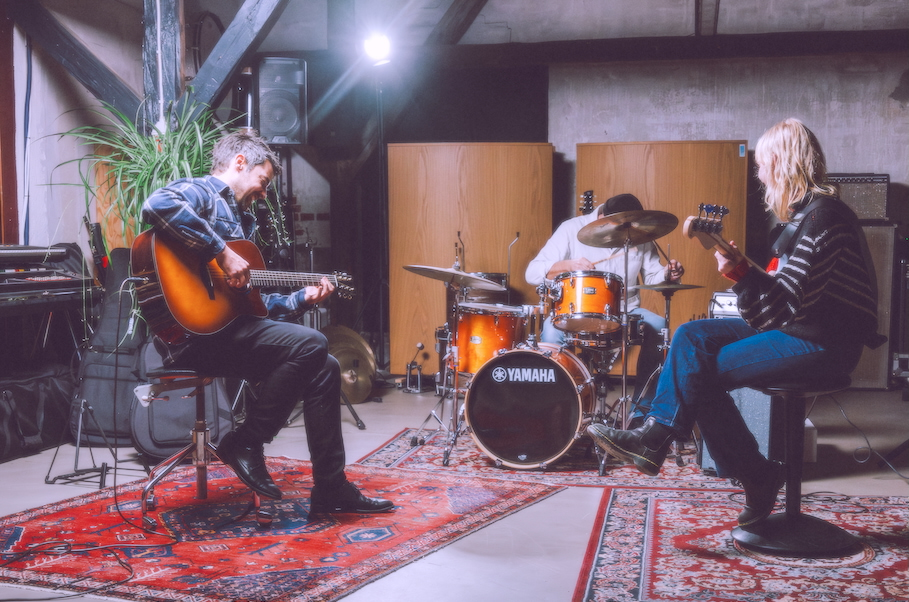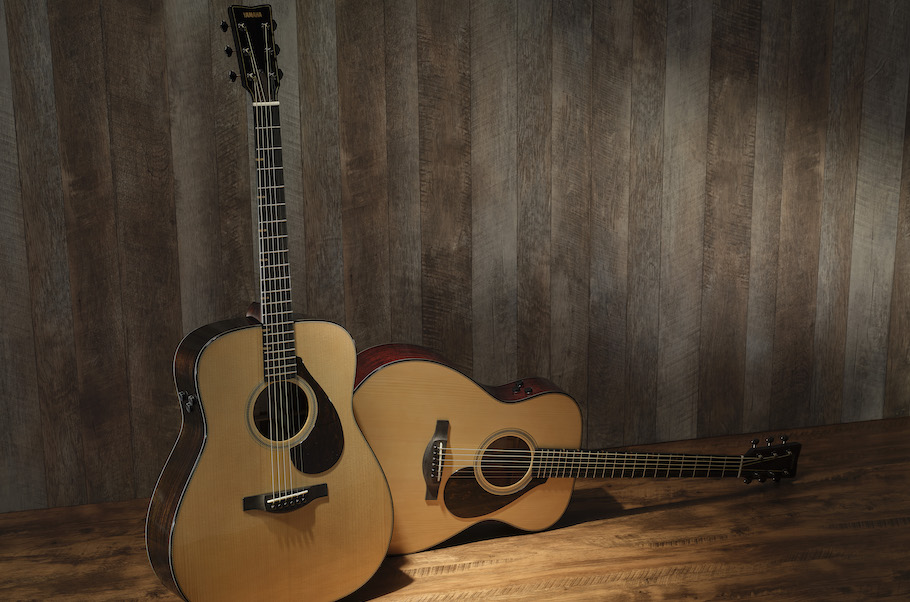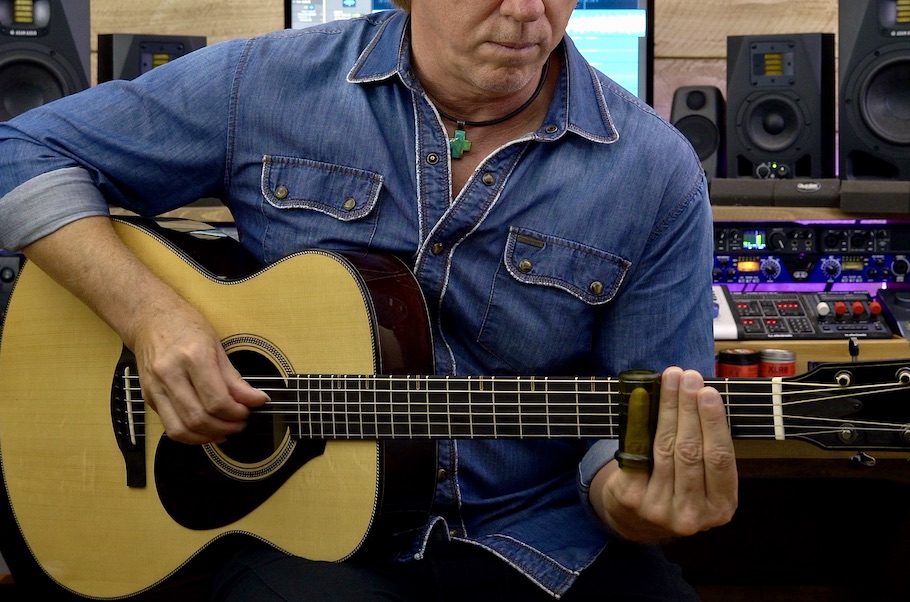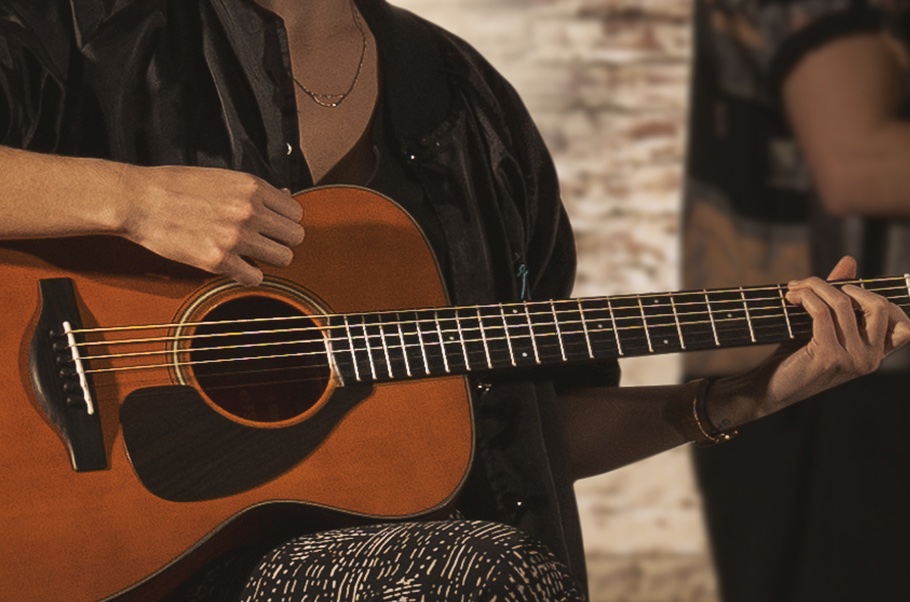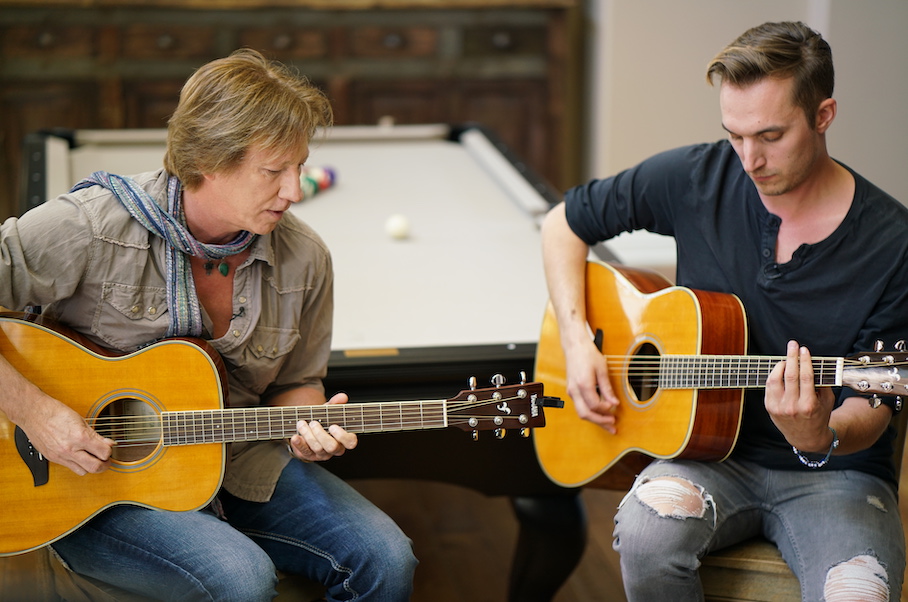First Look: TAG3 C TransAcoustic
Built-in looping and onboard effects make this exciting new guitar even more special.
Yamaha TransAcoustic guitars are acoustic guitars that come with onboard reverb and chorus effects that are added to the natural tone of the instrument without the need of an amplifier. (Want to know how the magic is achieved? Click here.) The immersive sound these guitars produce is so astonishing that when most people try one for the first time, they can’t believe what they’re hearing!
The first TransAcoustic guitar was the LL-TA, a dreadnought model introduced back in 2016. Since then, Yamaha has released a full range of TransAcoustic guitars, including several steel-string models and a nylon-string classical, in a variety of body sizes. I’ve played every one of them, and they never cease to impress me (and my audiences!). What’s more, I have found these instruments to be inspirational to my songwriting, live performances and recording.
Now Yamaha has taken TransAcoustic technology to a whole new level with the debut of the TAG3 C cutaway dreadnought guitar. The TAG3 C offers two onboard chorus effects, three reverbs, two delay types and a chromatic tuner, plus a built-in looper … and it sounds absolutely incredible.
To give you even more customization options, there’s a dedicated (and free) TAG Remote app that wirelessly connects your mobile device to the guitar via Bluetooth®. The app also provides extra loop storage and allows you to play the songs, backing tracks and playlists in your smartphone through the TAG3 C’s sound hole, enabling you to jam along literally anywhere, even at the beach or outdoor barbecue … again, without the need for an external amplifier.
In this posting, we’ll take a first look at this extraordinary instrument and all these incredible features … and yes, there’s a video of me performing a nine-layer loop all in one take so you can see and hear how it all works.
Physical Attributes
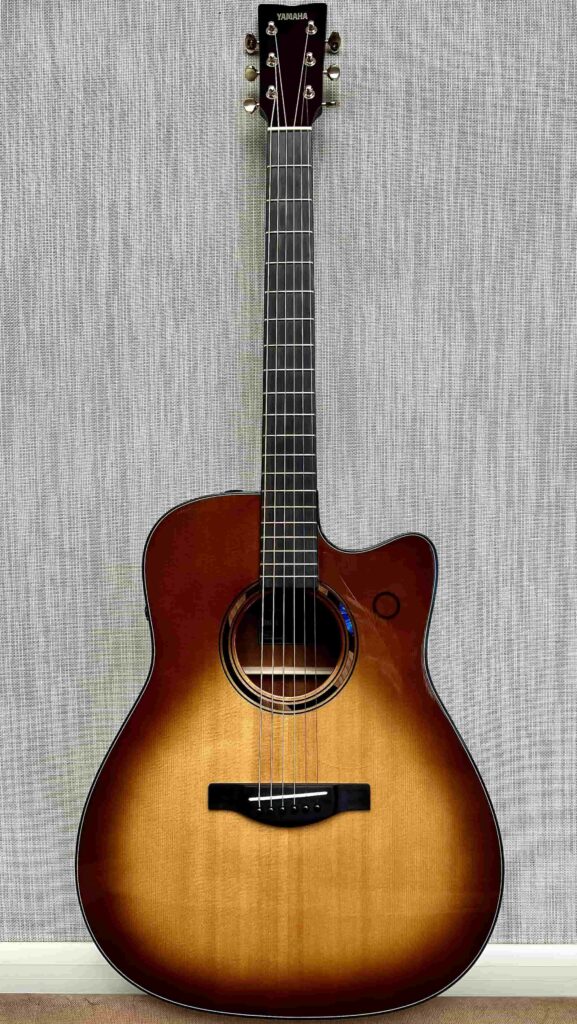
The TAG3 C has a dreadnought body with a solid mahogany back and sides; a solid Sitka spruce top with a beautiful sunburst finish and a clear pick guard; an ebony fingerboard and bridge, with a cutaway for easy access to the upper region of the fretboard; and a satin-finished mahogany neck. The neck profile is super comfortable, and the satin finish really makes a big difference to fast articulations.
The sound hole rosette, in particular, is quite stunning, with lovely tonewood inlays and blue accents. Inside the sound hole resides a micro rotary dial for the output volume of the built-in piezo pickup and preamp when connecting the TAG3 C to an amplifier — a nice touch for live performance.
As a bonus, the guitar comes with a hard bag for protection and transportation. From my own personal experience, these gig bags hold up well for extensive travel.
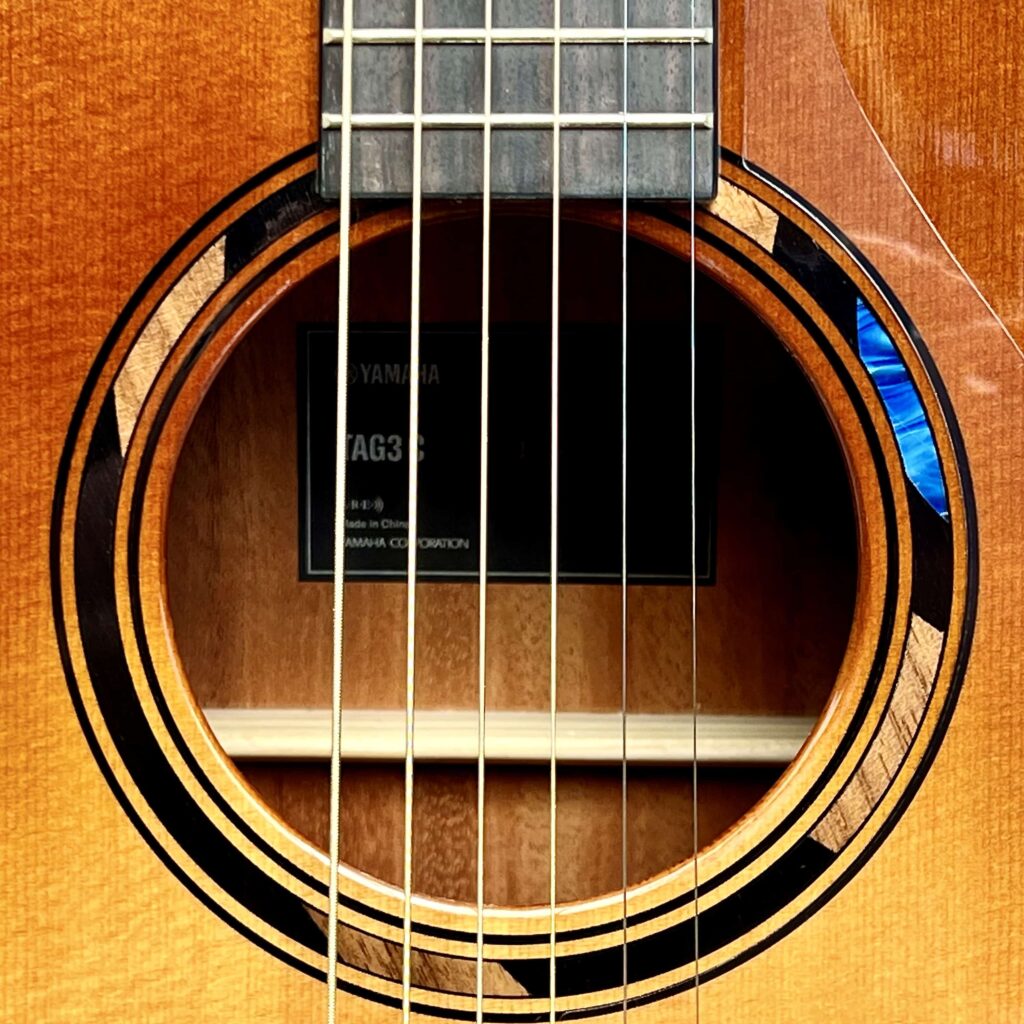
Sound Quality
Not only is this a great-sounding guitar, Yamaha has also done an amazing job with the audio quality of the effects, as well as the clarity of the loop playback. If you orchestrate your parts with care, the separation is exceptional — maybe even better than I’ve heard from any looper pedal.
Careful blending of the effects will also reward you with incredible-sounding guitar parts for singer-songwriter performances with vocals. Again, no pedals needed!
Looper
The onboard TAG3 C looper works much the same as many pedal-based loopers, except you’re using your hands to activate it instead of your feet. To arm it, simply tap the circular inlay below the sound hole (this serves as the looper sensor) and start playing. When you’ve completed your idea, just tap the sensor again to put the looper into playback mode. You can also arm and complete a loop by pressing the reverb knob in the control panel. (See below.)
To add further overdubs, just tap the sensor again (or you can press the reverb button). The TAG3 C will save your loop even after powering down the guitar. You can also save and recall up to ten of your favorite loops with the use of the app. Brilliant!
Control Panel

To activate the main control panel located along the top of the guitar (facing the player), simply press and hold the center power button for three seconds, causing the unit to light up for action.
Each of the four rotary knobs in the control panel have multiple functions, as follows:
Chorus Knob
This sets the mix output of the chorus you’ve selected in the app. When this knob is pressed, the last loop part is erased. (Think of this as your undo function on the looper.)
Loop Knob
Pressing this starts the looper recording; a white LED will illuminate when the looper is active. This dial also controls the output volume of the loop. I suggest experimenting with this for a while to perfect your looping playback volumes between parts. Pressing and holding the loop button also allows the TAG3 C to connect to the app via Bluetooth.
Reverb Knob
This sets the output mix of the reverb you’ve selected in the app. Pressing the knob activates the looper “ready” mode, causing the lights around the power button to flash red. You can also press it to end recording instead of touching the looper sensor.
Delay Knob
This sets the mix level of the delay you’ve selected in the app (or the default setting if not connected).
Chromatic Tuner
Pressing and holding the delay knob for three seconds activates the onboard chromatic tuner. All you have to do is watch the LEDs around the center power button: Red indicates that the note is out of pitch (either sharp or flat); when the green center LED is lit, the string being played is at the correct pitch.
Onboard Effects
There are seven onboard effects in three different categories, as follows:
Chorus
The TAG3 C offers two chorus types: Double Detune and 4-Voice. Double Detune allows you to create mild to wide fluctuations of pitch above and below the original notes or chords. 4-Voice provides an extremely musical and smooth modulation effect.
You can freely select and audition each, dialing-in to taste using the depth, speed, tone and number of voices parameters in the app. The chorus knob in the control panel can then be used to blend the effect into the acoustic guitar sound.
Reverb
There are three reverb types available: room, hall and plate. Reverbs replicate the size of an ambient space and the reflection of sound created in those spaces. Room reverb creates the ambient sound created in a small space like a room, while hall reverb replicates the ambient sound in a large space like a concert hall. Plate reverbs replicate the sound created when audio vibrates a large steel plate. Think of room and hall reverbs as an emulation of natural spaces, while plate reverbs are contrived with mechanical components.
The TAG Remote app allows you to modify the selected reverb’s decay, tone and pre-delay. As described above, the master mix output for the reverb is in the guitar’s control panel.
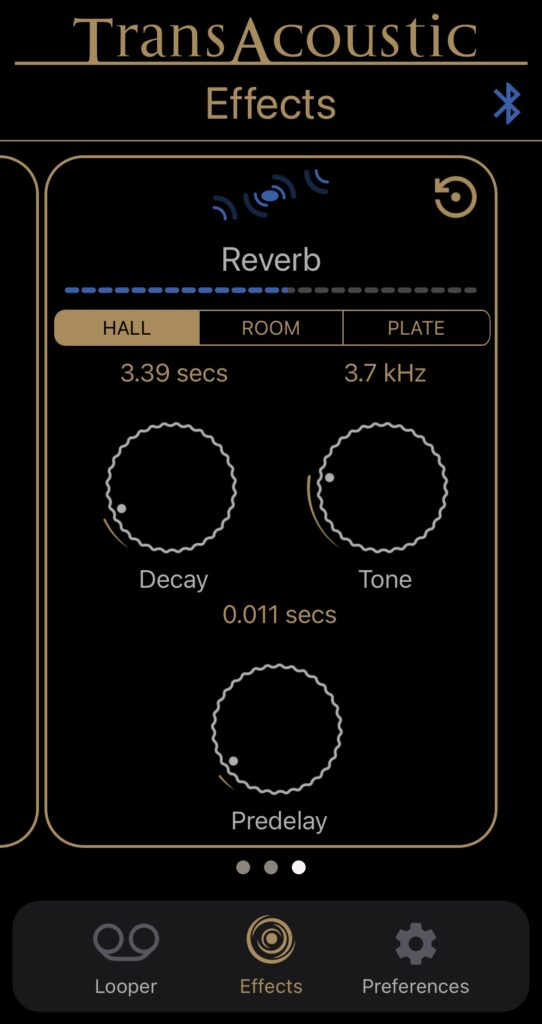
Delay
There are two onboard delay types: simple and analog. Delay times can be dialed in using the time control or via Tap Tempo. To use Tap Tempo, all you have to do is depress the delay knob a few times in time with your loop (or at the tempo you’ll be playing your parts), and the TAG3 C delay will sync quarter notes to the tempo of the tap.
The simple delay provides a standard mono digital delay with tonal shaping via high and low frequency damping controls, while analog delay provides a nice replication of a tape echo delay. This kind of delay tends to have a warm tone with a characteristic (and sonically pleasing) degradation of audio quality as the repeats fade away.
In the app, feedback controls the amount of repeats, and the high damping/low damping and treble and bass controls fine-tune the brightness or warmth of the delay tones. As mentioned above, the delay knob in the guitar’s control panel determines the delay mix level.
TAG Remote App
The ultimate way to use the TAG3 C is to harness the full power of editing and loop storage (up to ten loops) provided by the free downloadable TAG Remote app. If that isn’t enough, you can also play your backing tracks, favorite songs and playlists through the guitar sound hole using your mobile device. This means that you can take your TAG3 C literally anywhere — even to the park or a bonfire jam — and when the playing is over, you can amplify your playlist through the guitar for background ambience.
Charging
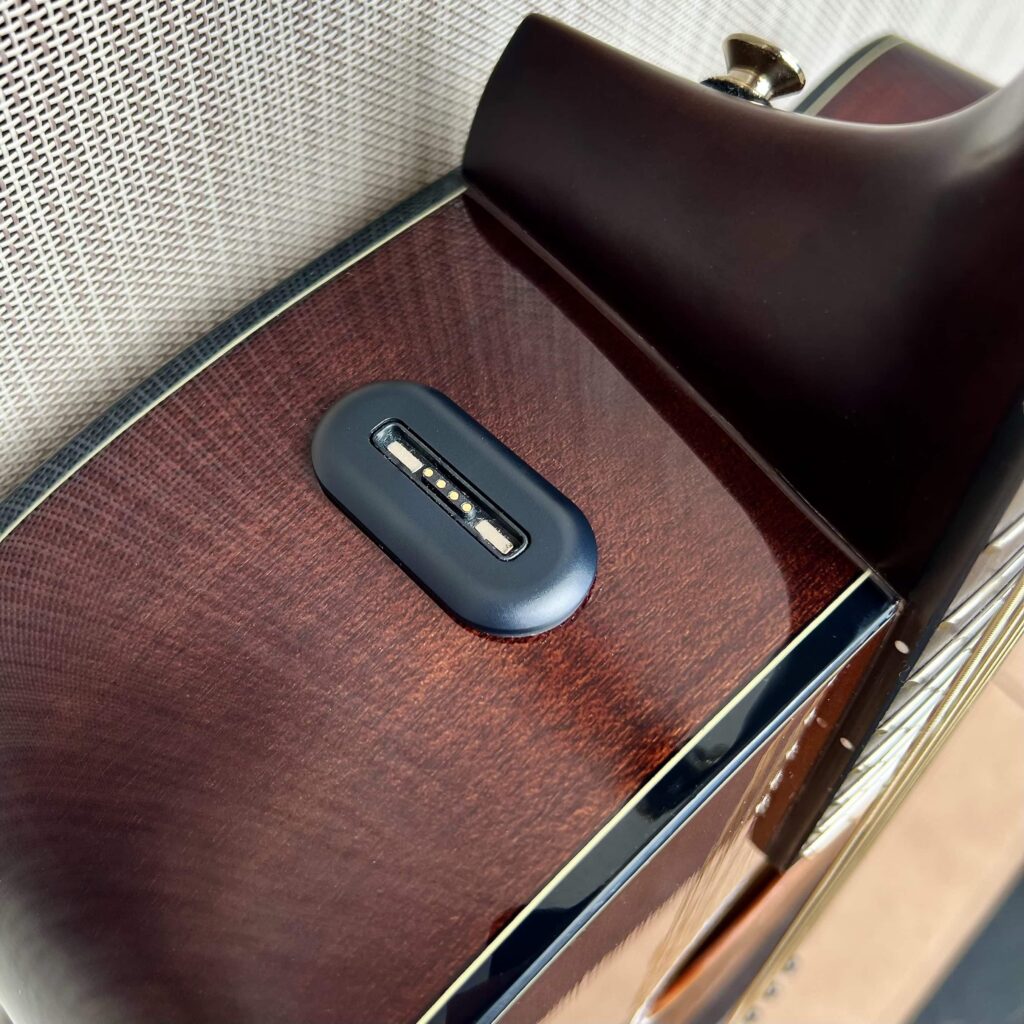
Yamaha has chosen not to use batteries to power the TAG3 C effects, looper and preamp. (You can, of course, always simply opt to play the TAG3 C as a purely acoustic guitar too.) I’d imagine this amount of horsepower in one guitar would drain regular batteries pretty quickly and thus become very expensive.
Instead, there’s a built-in rechargeable lithium-ion battery, with a magnetic power connector on the upper shoulder of the guitar. This should give the player five plus hours of play time without recharging — long enough for a gig or gathering.
The Video
This video provides a one-take looping performance with multiple layers to demonstrate the TAG3 C audio quality and ease of use, as well as the way in which the onboard effects seamlessly blend together.
I’m using a basic microphone to capture the acoustic sound coming from the sound hole, and blending that with the output of the pickup system direct to my DAW. You’ll notice that I’m leaving space between parts and thinking about the frequency range of each.
Timing is everything, so make sure your initial part and loop is perfectly in time before building the layers!
The Wrap-Up
Especially considering all the advanced features, the TAG3 C may well be the best guitar I’ve played in a long time. The acoustic tones are superb, the playability, build quality and finishes are excellent, and the effects, looper and tuner add a delicious frosting on an already masterful cake.
This guitar basically replaces multiple pedals, along with being an inspirational instrument for writing in the hotel or playing to an audience. The TAG3 C is simply exceptional in every way!











